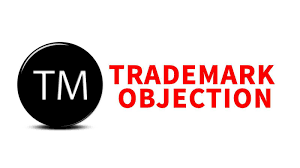Trademark Objection
Navigating Trademark Objection: Strategies for a Successful Resolution
Introduction
In the intricate world of intellectual property, trademarks stand as a shield for brand identity. However, the journey isn’t always smooth, as trademark objections can present challenges. This exhaustive guide provides insights into the trademark objection process, offering strategies for resolution.

Understanding Trademark Objection
Trademark objection occurs when the Trademark Registry raises concerns or issues with a filed trademark application. This can be due to various reasons, such as similarity to existing trademarks, lack of distinctiveness, or failure to comply with legal requirements. Resolving objections is crucial for successful trademark registration.
Common Reasons for Trademark Objection
- Similarity to Existing Trademarks: If a proposed trademark closely resembles an already registered one, it may face objections.
- Descriptiveness: Descriptive terms that lack distinctiveness may be objected to, as trademarks are expected to be unique identifiers.
- Generic or Common Terms: Using generic terms that don’t distinguish products or services may lead to objections.
- Deceptive Marks: Marks that may mislead or deceive consumers are subject to objections.
- Contravention of Emblems and Names Act: Using prohibited emblems or names may result in objections.
Strategies to Address Trademark Objection
- Understand the Objection Letter:
- Action: Carefully review the objection letter from the Trademark Registry. Identify the specific reasons for objection and the sections of the Trademarks Act invoked.
- Consult with Legal Professionals:
- Action: Seek advice from trademark attorneys who specialize in intellectual property law. Their expertise can provide valuable insights into the objection and potential resolution strategies.
- Prepare a Detailed Response:
- Action: Respond comprehensively to each objection raised. Provide evidence, legal arguments, and any necessary amendments to address the concerns.
- Amend the Application:
- Action: If the objection is based on certain elements of the trademark, consider amending the application to meet legal requirements.
- Provide Evidence of Distinctiveness:
- Action: If the objection is due to lack of distinctiveness, present evidence showcasing the mark’s unique character and association with your products or services.
- Negotiate with Opposing Parties:
- Action: In case of objections raised by third parties, consider negotiating with them to find an amicable resolution. This may involve modifying the trademark or reaching a coexistence agreement.
- Attend Hearings or Personal Hearings:
- Action: If required, attend hearings to present your case. Personal hearings allow direct communication with the Trademark Examiner, providing an opportunity for clarification.
- Appeal to Intellectual Property Appellate Board (IPAB):
- Action: If the objections persist, filing an appeal with the IPAB is an option. This step involves a more formal legal process and requires legal representation.
Preventing Trademark Objection
- Comprehensive Trademark Search:
- Action: Conduct a thorough trademark search before filing to identify existing marks that may lead to objections.
- Distinctive and Unique Elements:
- Action: Choose trademarks that are distinctive and unique to minimize the risk of objections based on lack of distinctiveness.
- Professional Legal Assistance:
- Action: Engage with trademark attorneys during the application process. Their expertise can help navigate potential pitfalls and reduce the likelihood of objections.
- Regular Monitoring:
- Action: Monitor the market and trademarks regularly to identify potential conflicts early. This proactive approach can prevent objections before they arise.
Conclusion
Trademark objection is a common hurdle in the journey to secure intellectual property rights. This comprehensive guide has shed light on the reasons behind objections, strategies for resolution, and preventive measures. By understanding the intricacies of the trademark objection process and employing effective strategies, businesses can navigate this challenge successfully. Remember, the road to a registered trademark may have obstacles, but with the right approach and legal support, businesses can ensure their brand identity remains protected and distinctive in the marketplace.